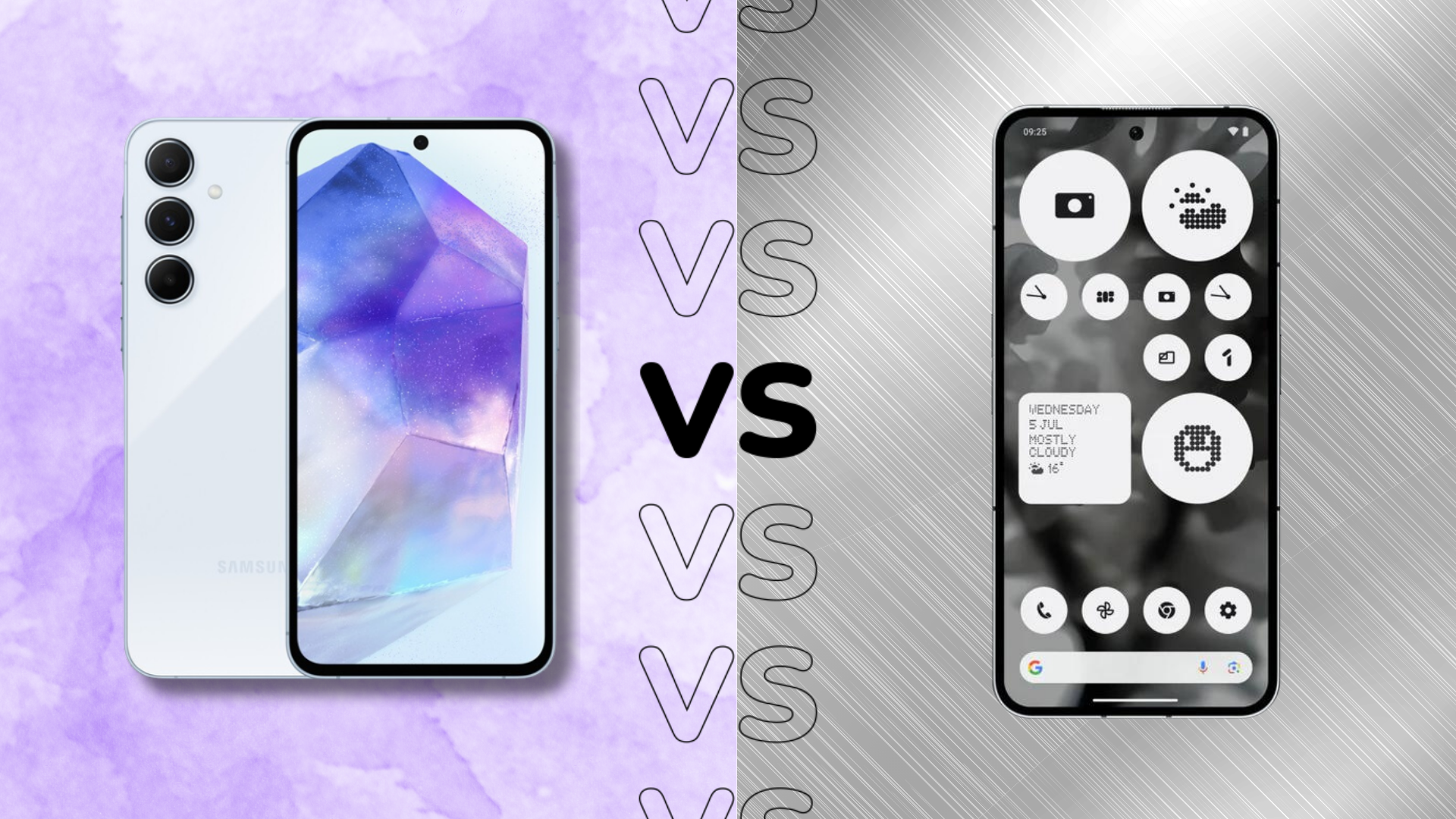Nothing Phone (2a) vs Nothing Phone (2): What’s the difference?

Nothing has just revealed its new budget-focused phone, the Nothing Phone (2a) – but how does it compare to its more premium sibling, the Nothing Phone (2)?
While you’d expect there to be plenty of differences between the two given the £200+ difference in price, you’d be surprised. In fact, the Nothing Phone (2a) matches or even exceeds the Nothing Phone (2)’s offering in some key areas, making it a pretty tempting option if you’re on a budget – on paper, anyway.
While we’ve gone hands-on with the Nothing Phone (2a), we’re not yet ready to deliver our final score. We have spent plenty of time with the Nothing Phone (2) however, giving us a good idea of how the two compare. With that said, here are some of the key differences between the Nothing Phone (2a) and Nothing Phone (2).
The Nothing Phone (2a) has a pretty capable screen
Despite the fact that the Nothing Phone (2a) costs almost half the amount of the full-fat Nothing Phone 2, the budget option competes pretty well.
Both phones sport a 6.7-inch 120Hz AMOLED screen, a boost from the 6.55-inch Nothing Phone (1), but the Nothing Phone (2a) has 0.2mm slimmer bezels at just 2.1mm thick. It’s also brighter in general use at 700nits compared to 500nits from the Phone (2), along with an increased 1100nits in HBM compared to the Phone (2)’s 1000nits.
It’s not a complete win for the Nothing Phone (2a) of course – the regular Phone (2) sports LTPO tech that lets it drop down to as little as 1Hz to save on battery life, and it has a higher peak brightness of 1600nits compared to 1300nits from the (2a) – but the amount of tech on offer is a nice surprise for such a budget-friendly phone.

Both have very similar camera setups
As with the screen tech, the Nothing Phone (2a) and Nothing Phone (2) share impressively similar camera tech despite the differences in price.
That starts with a 50MP primary camera with a fast f/1.88 aperture and OIS tech to keep things nice and steady, while both are backed by a matching 50MP 114-degree ultrawide lens.
In fact, the camera hardware is near-identical across the entire camera system, including the 32MP selfie camera, with the only notable difference being the use of different ISPs. The Nothing Phone (2a) sports the 14-bit Imagiq 765 while the Phone (2) sports the 18-bit Spectra, which should translate to slightly better performance from the Phone (2), but there shouldn’t be that much in it.
Even so, it’s impressive to see such well-specced cameras at such a budget price point.
The Nothing Phone (2a) has a larger battery
Continuing the trend of seemingly matching the more premium variant at a budget price, the Nothing Phone (2a) actually has a bigger battery than the Nothing Phone (2). Granted, there’s not that much in it with the Phone (2a) boasting a 5000mAh battery while the Phone (2) clocks in at 4700mAh, but if we’re going by spec alone, there’s one clear winner.
Of course, there’s more to battery life than capacity, and it’s likely that with LTPO tech and other optimisations the Nothing Phone (2) may last longer in real-world use, but that’s something we’ll have to confirm once we’ve fully tested the new budget model.
When the phones do need a top-up, identical 45W fast charging should deliver pretty speedy charge times. The Nothing Phone (2) went from flat to full in 56 minutes in our tests, though with a slightly larger battery, the Phone (2a) will likely take slightly longer to hit the 100% mark.

The Nothing Phone (2) has a full Glyph interface
One of the main differences between the Nothing Phone (2) and its cheaper sibling is, rather ironically considering its a key brand focus, the Glyph Interface.
The Nothing Phone (2) continues the journey from the Phone (1) with a range of LEDs embedded within the transparent rear of the phone that can not only deliver custom LED patterns for different notifications and calls, but perform cool actions like displaying a timer and even the amount of battery life when charging.
The Nothing Phone (2a) does sport the same transparent rear as others in the series, but it’s way more toned down on the Glyph interface front, with only three LEDs surrounding the centrally-placed camera module on the rear. The core functionality is still here – they’ll flash for calls and texts and can be used as a timer – but it’s not quite as flashy or customisable as the 11 LEDs of its more premium sibling.
The Nothing Phone (2a) is much cheaper
As alluded to, the Nothing Phone (2a) is way cheaper than the regular Nothing Phone (2), starting at just £319. That’s almost half the price of the regular Nothing Phone (2) which starts at £579, and while it’s more capable in certain areas, there isn’t that much in it between the two smartphones.
The Nothing Phone (2) is available to buy now, while the Nothing Phone (2a) is available to pre-order now ahead of release on 12 March.







